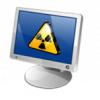
WHat's the best file system for a USB Drive?
#1

 Posted 03 January 2009 - 10:36 PM
Posted 03 January 2009 - 10:36 PM

#2

 Posted 04 January 2009 - 05:19 AM
Posted 04 January 2009 - 05:19 AM

#3

 Posted 04 January 2009 - 10:17 AM
Posted 04 January 2009 - 10:17 AM

#4

 Posted 04 January 2009 - 01:10 PM
Posted 04 January 2009 - 01:10 PM

Windows (out of the box) can't read Linux partitions, nor can it read HFS file systems which is the newer MAC standard.
Windows 95, 98 and ME cannot read NFTS drives.
Linux may or may not be able to read HFS either. It can read NTFS.
That being said, NTFS is not the best solution for a USB Pen/Flash drive due to the overheads required.
#5

 Posted 04 January 2009 - 01:14 PM
Posted 04 January 2009 - 01:14 PM

#6

 Posted 04 January 2009 - 01:15 PM
Posted 04 January 2009 - 01:15 PM

Yes, as far as I know, all versions of Linux can read FAT32 filesystems. There might be some limited ones which can not though, but in that case you don't have a common filesystem that everything can read, so just ignore those.
Edited by Kemasa, 04 January 2009 - 01:18 PM.
#7

 Posted 04 January 2009 - 01:55 PM
Posted 04 January 2009 - 01:55 PM

#8

 Posted 04 January 2009 - 06:00 PM
Posted 04 January 2009 - 06:00 PM

#9

 Posted 23 February 2009 - 12:00 PM
Posted 23 February 2009 - 12:00 PM

All mainstream operating systems--Mac, Linux, and Windows--are all capable of reading, writing, and formatting non-native file systems with either driver patches or software. Wikipedia has a great comparison of file systems which should help you decide on your own which file systems are the best for your needs. Most advanced files systems use journaling which helps with minimize fragmentation, data lose and optimize disk and system utilization.
GREAT ARTICLE AND COMPARISON OF FILE SYSTEMS:
http://arstechnica.c...ile-systems.ars
http://en.wikipedia....of_file_systems
I personally use EXT3 and XFS for all of my data storage which can be accessed on any of my computers. I have multiple computers that all have the ability to multiboot. My PCs can boot multiple OS's including Mac OSx86, Ubuntu, Gentoo, and either Win XP Pro or Windows 7 Beta. My Macs triple and Quad boot Mac OS X, Linux, and Windows 7 Beta.
MACS CAN READ, WRITE AND FORMAT NTFS, FAT, and LINUX VOLUMES
Macs can mount and read NTFS volumes automatically. To enable a Mac to read and write NTFS and EXT2/3 there are free and commercial software/drivers available. MacFuse (http://code.google.c...acfuse/wiki/FAQ) opens the door to access almost every filesystem available on a Mac. MacFuse is an implementation of the open source project Fuse (http://fuse.sourceforge.net/). Fuse is supported by most operating systems (http://apps.sourcefo...peratingSystems) giving virtually all operating systems the ability to at least read, if not write to, non-native file systems.
FREE Software for Macs:
MacFuse: http://code.google.com/p/macfuse/
NTGS-3G: www.ntfs-3g.org
Ext2FS: http://sourceforge.n...ojects/ext2fsx/
Commercial Software:
http://www.paragon-s...home/extfs-mac/
http://www.paragon-s.../home/ntfs-mac/
Windows does not natively support any file system except for NTFS and FAT systems which are the least secure and vonurable to corruptions than HFS+ and EXT3 systems. Below are both free and commercial products that allow Windows to access other files systems.
HFS+ Files System on Windows
FREE Read Only: http://hem.bredband.net/catacombae/
Shareware: Read, Write, Format: http://www.asy.com/scrtm.htm
Linux can mount and write NTFS and FAT filesystems. The HFS+ files system has successfully been ported to Linux. The new beta driver allows read and write access. If you do not wish to use a beta driver, Linux still has the ability to read and write on non-journaled HFS+ and read-only on journaled HFS+
http://sourceforge.n...cts/linux-ntfs/
http://sourceforge.n...s/linux-hfsplus
Based on the information provided, I hope you can make your own decision on what the best file system to use that will meet your need. My recommendation would be to use a more advanced file system if you value your data, want to minimize fragmentation, and optimize data and system performance. Microsoft & the Windows monopoly is starting to crumble as xNIX operating systems gain momentum.
#10

 Posted 30 May 2009 - 11:20 AM
Posted 30 May 2009 - 11:20 AM

Macs can't read NTFS drives or partitions. They can read FAT formatted drives including FAT32.
Windows (out of the box) can't read Linux partitions, nor can it read HFS file systems which is the newer MAC standard.
Windows 95, 98 and ME cannot read NFTS drives.
Linux may or may not be able to read HFS either. It can read NTFS.
That being said, NTFS is not the best solution for a USB Pen/Flash drive due to the overheads required.
Actually, Mac OSX (at least with Leopard) can read NTFS USB drives. But, cannot write. Partitions sounds best, or FAT32 if 4GB file size restrictions are OK. I have another trick.
Using Parallels and a Win/XP virtual machine on my Mac. Mount the USB drive on the Win/XP VM. In Parallels Desktop 4, make sure SmartMount is enabled in the VM config so that a drive mounted in Win/XP is also available in Mac OS. Drag and drop away. Note that Mac apps won't see the drive though ... only Finder and the Win/XP VM.
Similar Topics
0 user(s) are reading this topic
0 members, 0 guests, 0 anonymous users
As Featured On:














 Sign In
Sign In Create Account
Create Account

